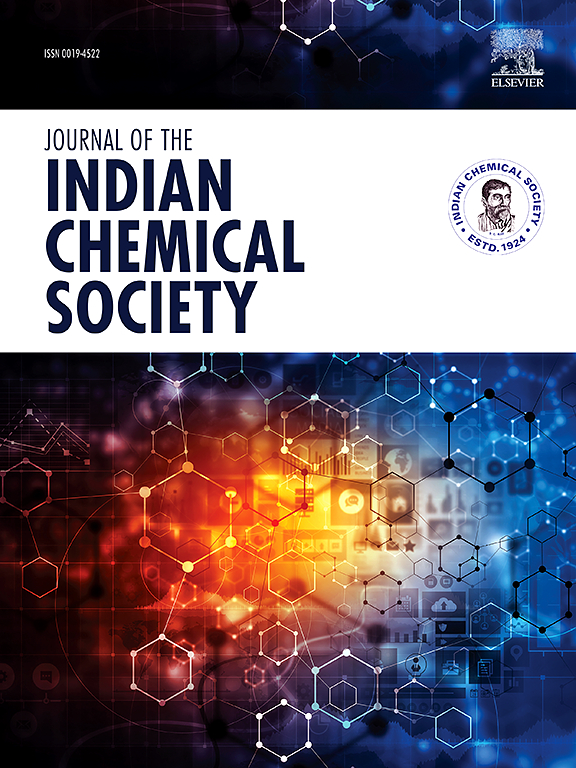室温NH3传感Ni/BiVO4传感器的制备与绿色合成
IF 3.2
4区 化学
Q2 CHEMISTRY, MULTIDISCIPLINARY
引用次数: 0
摘要
氨气(NH₃)是一种有毒气体,即使浓度很低也需要高灵敏度的检测。本研究采用绿色化学方法,利用万寿菊叶提取物合成了氧化镍纳米粒子(NiO NPs),并通过紫外可见光谱确定了前体与提取物的最佳比例为 1:4。阳光被认为是最有效的合成条件。钒酸铋(BiVO₄)纳米粒子是通过溶热法制备的,而 BiVO₄-NiO 纳米复合材料则是通过水热法制备的。利用能量色散 X 射线光谱(EDX)、紫外可见光谱、傅立叶变换红外光谱(FTIR)、扫描电子显微镜(SEM)和 X 射线衍射(XRD)对材料进行了全面表征。与丙酮和乙醇相比,基于 NiO-BiVO₄ 的气体传感器对 NH₃ 的灵敏度更高,在 136 ppm 时的响应率高达 97%。该传感器的响应和恢复时间都很快(分别为 20 秒和 80 秒),检测限低至 8 ppm,并且具有出色的重复性、长期稳定性和选择性。这些结果凸显了 BiVO₄-NiO 纳米复合材料在先进气体传感应用方面的潜力。本文章由计算机程序翻译,如有差异,请以英文原文为准。

Facile preparation and green synthesis of Ni/BiVO4 sensor for room temperature NH3 sensing
Ammonia (NH₃), a toxic gas, requires highly sensitive detection even at low concentrations. In this study, nickel oxide nanoparticles (NiO NPs) were synthesized via a green chemistry approach using Tagetes patula leaf extract, with an optimal precursor-to-extract ratio of 1:4 determined by UV-Vis spectroscopy. Sunlight was identified as the most effective synthesis condition. Bismuth vanadate (BiVO₄) NPs were prepared via a solvothermal method, while the BiVO₄–NiO nanocomposite was fabricated using a hydrothermal approach. The materials were thoroughly characterized using energy-dispersive X-ray spectroscopy (EDX), UV-Vis spectroscopy, Fourier-transform infrared (FTIR) spectroscopy, scanning electron microscopy (SEM), and X-ray diffraction (XRD). The NiO–BiVO₄-based gas sensor exhibited superior sensitivity toward NH₃ compared to acetone and ethanol, with an exceptional response of 97% at 136 ppm. The sensor demonstrated rapid response and recovery times (20 s and 80 s, respectively), a low detection limit of 8 ppm, and outstanding repeatability, long-term stability, and selectivity. These results highlight the potential of the BiVO₄–NiO nanocomposite for advanced gas-sensing applications.
求助全文
通过发布文献求助,成功后即可免费获取论文全文。
去求助
来源期刊
CiteScore
3.50
自引率
7.70%
发文量
492
审稿时长
3-8 weeks
期刊介绍:
The Journal of the Indian Chemical Society publishes original, fundamental, theorical, experimental research work of highest quality in all areas of chemistry, biochemistry, medicinal chemistry, electrochemistry, agrochemistry, chemical engineering and technology, food chemistry, environmental chemistry, etc.

 求助内容:
求助内容: 应助结果提醒方式:
应助结果提醒方式:


